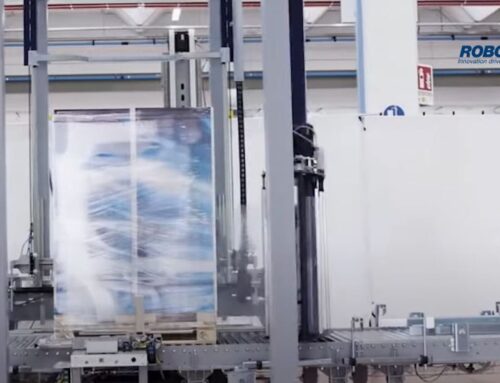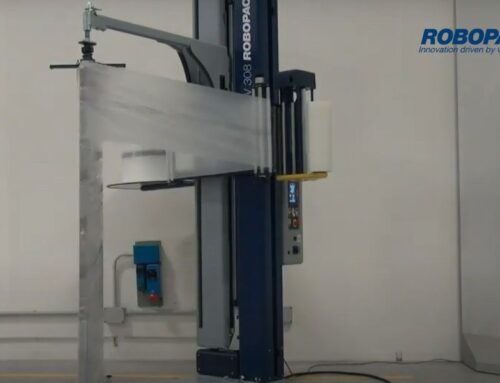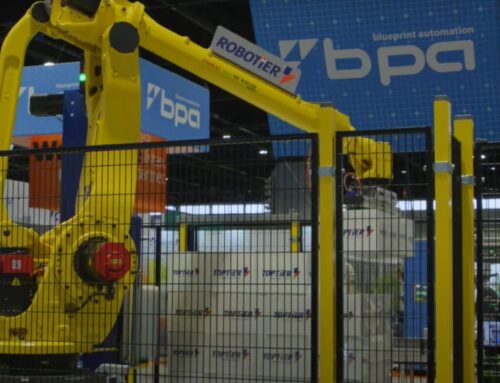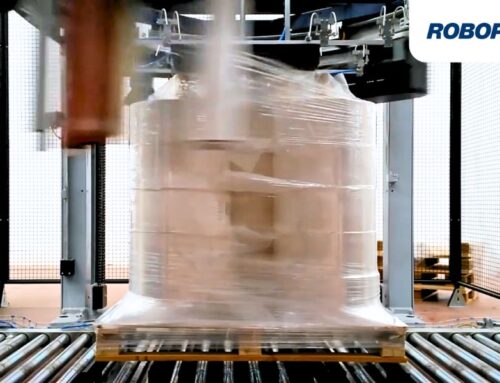There are two different types of stretch wrap: blown stretch wrap and cast stretch wrap. These two types have their similarities, but there are also several differences between them. This includes the way that they’re manufactured, their application use, and more. It’s important to choose the right kind of stretch wrap for your secondary packaging needs. If you use the wrong type of film for your load, it could lead to product loss or damage during freight shipment, along with other issues, such as difficulties reading or scanning. That’s why we made this guide on the difference between cast vs. blown stretch wrap to help you make the right choice between the two.
How Cast Stretch Wrap Is Made
This type of stretch wrap is manufactured using a cast extrusion process. This process begins with a thermoplastic material being fed into a heater screw barrel and a narrow slot die. Here, the material is melted. After being passed through the die, the material is transferred to a chill roll, where it quickly solidifies.
How Blown Stretch Wrap Is Made
The process of creating blown stretch wrap—called the blown film extrusion manufacturing process—starts in a similar way to the cast extrusion process. Thermoplastic material is fed into a heated screw barrel and then vertically extruded through an annular slit die, where it forms a thin-walled tube. The thin-walled tube is blown upward and outward, much like a balloon or bubble, and then gradually cooled.
Which One Is Better?
Neither type of stretch wrap is inherently better than the other. They’re simply better suited for different purposes. You can compare these two types of stretch wrap in seven categories: load retention, film memory, film yield, puncture resistance, cling, visual clarity, and noise of unwind. Understanding the differences between cast vs. blown stretch wrap when it comes to these seven factors is the easiest way to determine which type of stretch wrap is the best option for a specific load.
Load Retention
If you want less stretch, blown film is the better choice. Even after being applied to the pallet, cast film will stretch easily.
Film Memory
Blown film has much better film memory, which means it can shrink back after stretching. Cast film will have a much harder time returning to its original state.
Film Yield
Cast film will stretch much further than blown film, which will allow you to cover more pallets with less film.
Picture Resistance
Blown film is much more resistant to breaking, although cast film will normally only tear when put under great amounts of stress.
Cling
Blown film is only clingy on one side. Cast film is naturally clingy on both sides, which can cause pallets to stick together.
Visual Clarity
Since blown film isn’t completely translucent, it can make reading and scanning more difficult. It does, however, have a lower gloss that can reduce reflections. If you want something that’s clear, go with cast film—just keep in mind that it has higher gloss.
Noise of Unwind
If you want some peace and quiet, opt for cast film, which is virtually silent when it’s being unwound from the stretch roll. Blown film, on the other hand, tends to be loud.
You can wrap your loads by hand; however, doing it with state-of-the-art industrial wrapping machines is a lot easier, safer, and more profitable. If you’re in need of stretch wrappers for your packaging facility, come and browse through Robopac USA’s selection of innovative, high-quality secondary packaging machinery.







